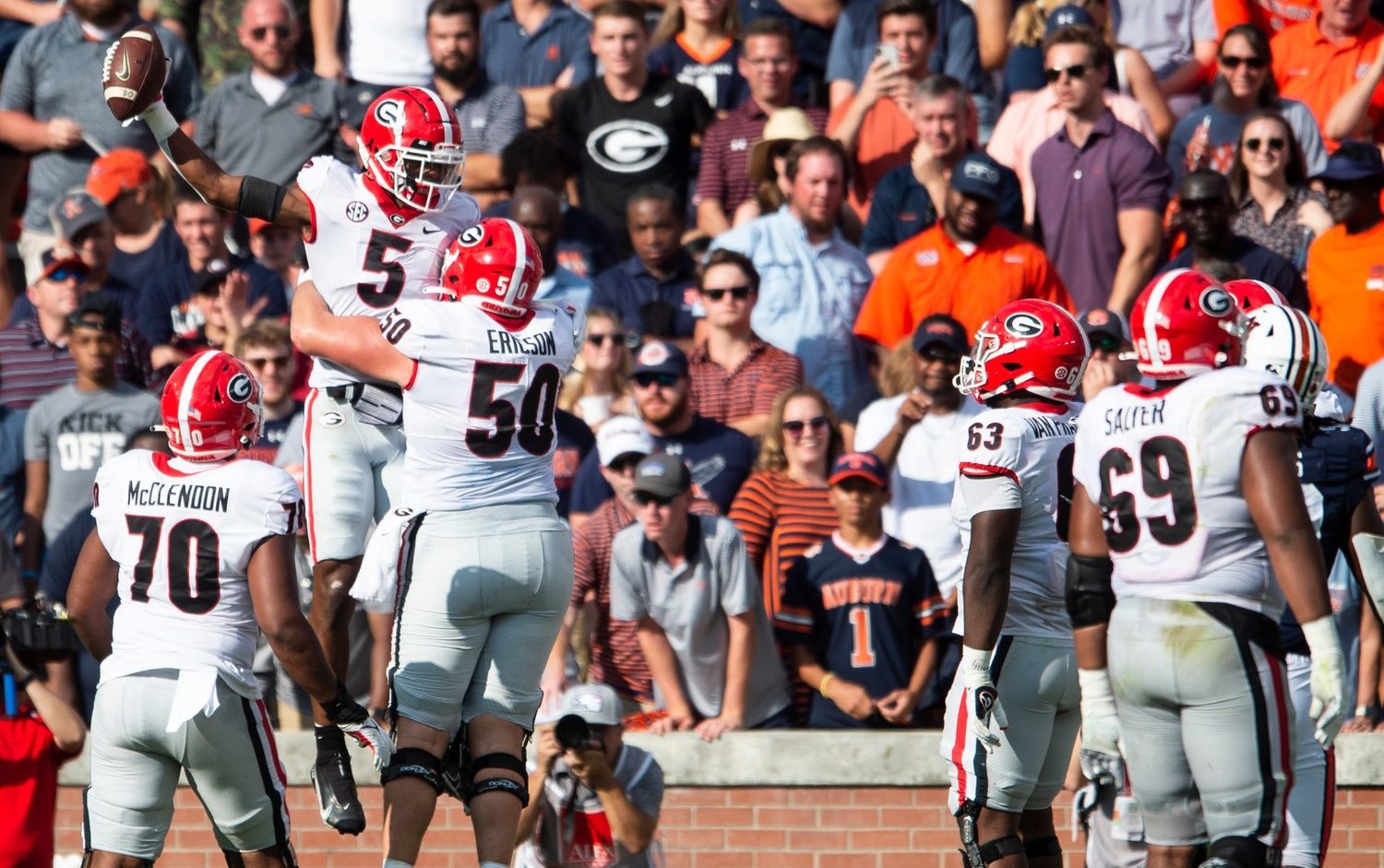
Georgia’s no-name receivers suddenly making a name for themselves
By Keith Farner
Published:
With a summer full of injuries at wide receiver, no one outside of Butts-Mehre Heritage Hall could have seen a boon of overlooked receivers be a source of strength for Georgia’s rise to No. 1 and a bona fide national championship favorite.
Yet here comes the likes of Ladd McConkey, Jermaine Burton and Adonai Mitchell, who have developed into a most improbable group of leading wide receivers for Georgia.
McConkey, the 3-star recruit who had main other offers from Vanderbilt and Army, had 5 catches for 135 yards and a touchdown at Auburn. McConkey is one of the poster children of a type of player that spews grit and heart that is best understood by the people behind the scenes until they get their chance.
“You see it the way they play,” coach Kirby Smart said.
They don’t have the names that would light up the marquee at the Georgia Theater like AJ Green, Tavarres King and Chris Conley. They don’t even come with the more recent household recognition of George Pickens and Demetris Robertson.
Measurables?
- McConkey is 6-foot and 184 pounds
- Burton is 6-foot and 200 pounds
- Mitchell is 6-4 and 190 pounds
They are from Chatsworth, Ga., Calabasas, Calif., and Missouri City, Texas. Combined, those towns barely scrape over 100,000 people. But they are Georgia’s top 3 wide receivers, with 16 catches for 280 yards, 13 for 224 and 11 for 167, and each has 2 touchdowns.
“Unfortunately, there’s not but a handful of 6-4 really fast, physical, explosive players so you have to have sometimes exceptions,” Smart said. “Is his exception his character? Is his exception his work ethic? Is his exception his bulk?”
What they have is production.
McConkey, for example, had catches at Auburn that went for 11, 45, 13 and 60 yards. He had another against Arkansas go for 16, Vanderbilt for 27 and one against UAB for 32.
The main measurables that Georgia recruiters are looking for is versatility, flexibility and availability.
“Your intelligence and ability to play multiple positions,” Smart said. “There’s a lot that goes into playing receiver at Georgia. We don’t want all cookie-cutter guys. We don’t want every guy to fit the same mold.”
Because of a slew of summer and ongoing injuries to the presumed star receivers, Georgia found itself looking for help down the depth chart. The reason these seemingly lesser-known players have succeeded, according to Smart, is they have a toughness about them. Their courage and strength of courage was on full display when Jordan-Hare Stadium was at full throat, and it’s what brings the red and black faithful out of their seats.
“We’ve got some guys that are going to compete to play which is what we challenge people to do,” Smart said. “That ‘next man up’ mentality is there, but it’s also our resiliency. We have this word in our core trait and that’s resiliency. Well, that’s what we show when the next guys got to go out and play, because we’re resilient.”
Making plays off of play-action is another somewhat hidden piece of the wide receivers’ development. While they are new to the headlines, they have largely been in the system for at least a spring and this regular season, if not longer. The combination of the running backs, and emergence of tight ends like Brock Bowers, and the improved health of Darnell Washington has helped. That means Georgia can play 3 tight ends of up to 40 percent of the time, as Smart pointed out.
“I think the play-action pass game has helped our lack of depth at receiver succeed, along with our depth at running back and tight end,” he said. “We are fortunate to be able to get guys back there and be a little more healthy to be able to take some of the burden off of wide receiver.”
A former newspaper veteran, Keith Farner is a news manager for Saturday Down South.







